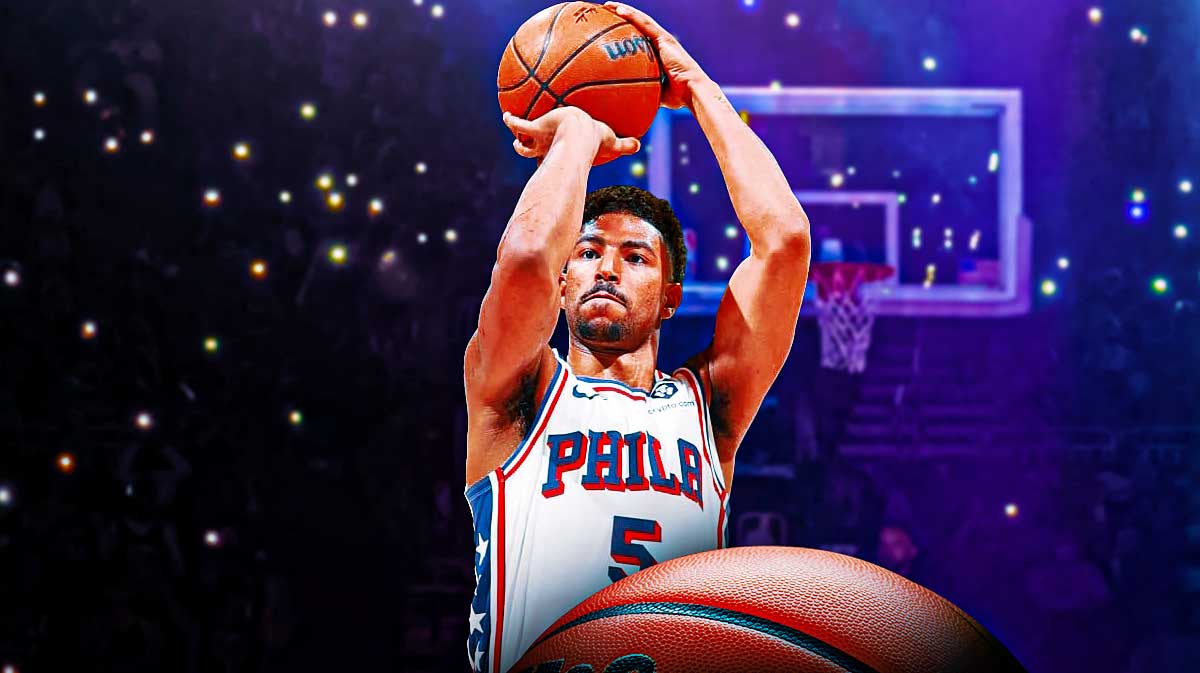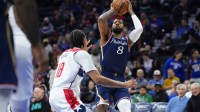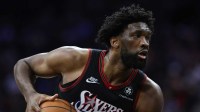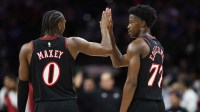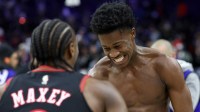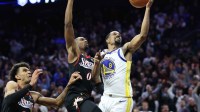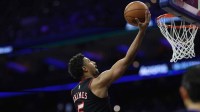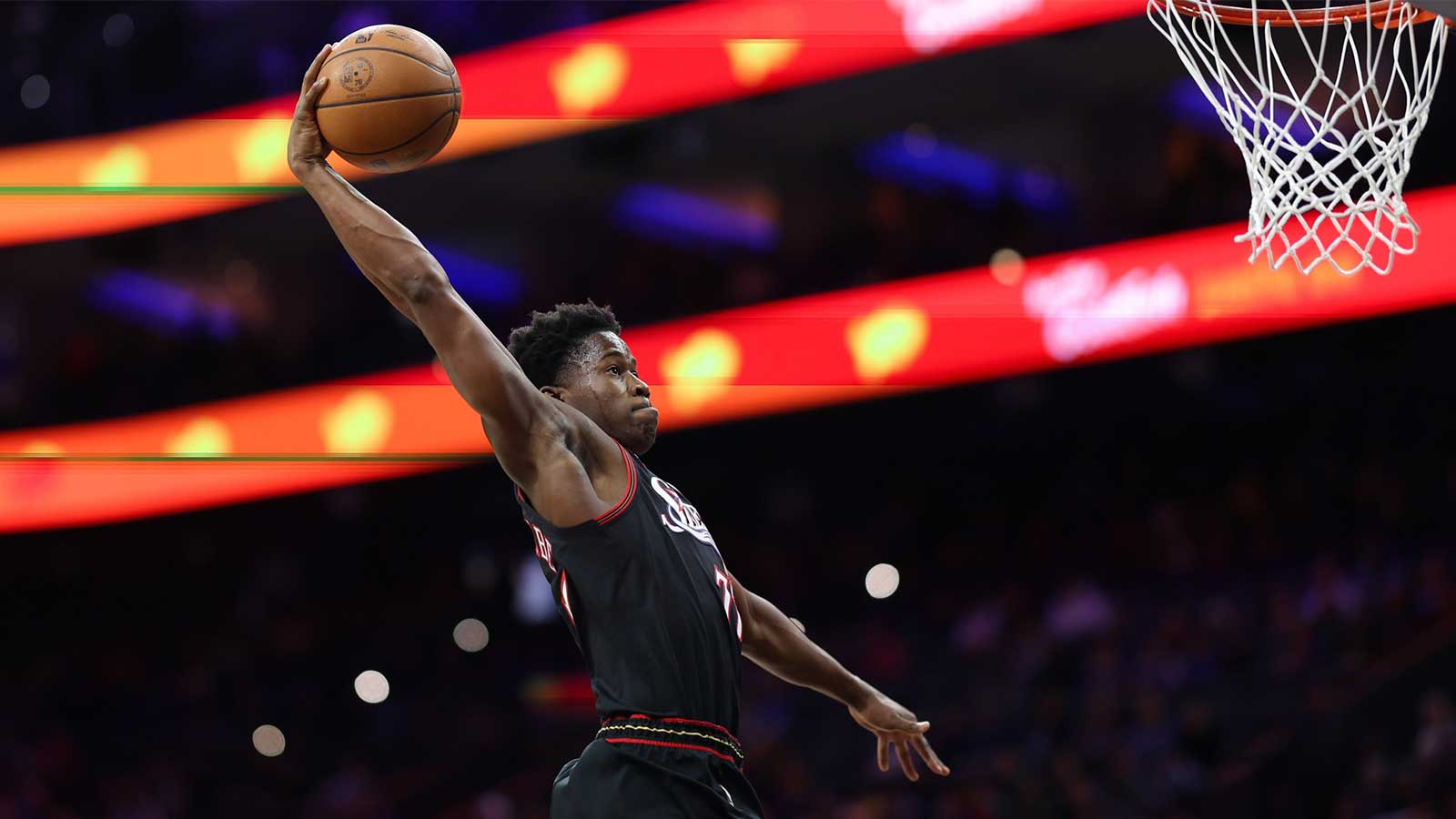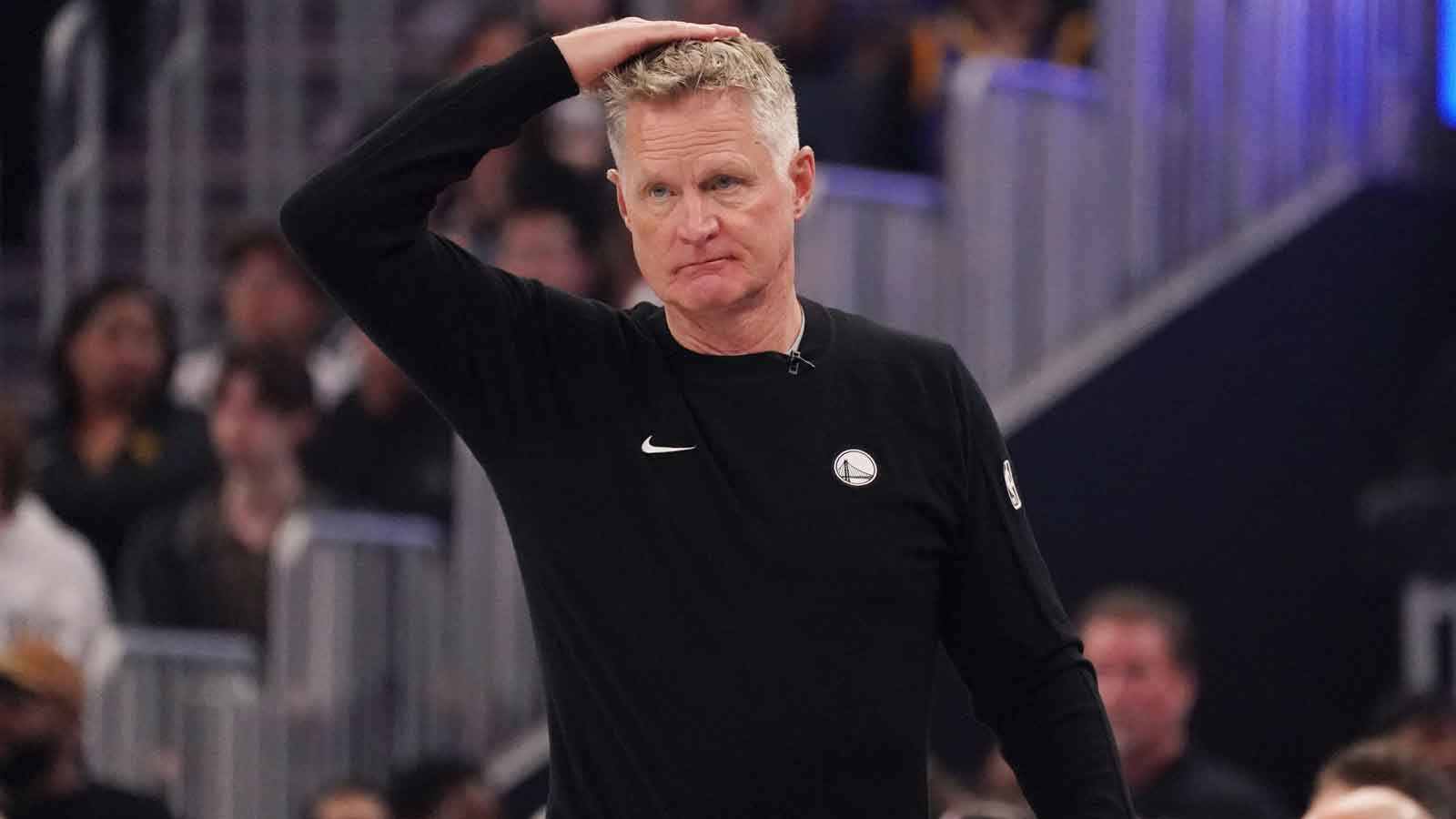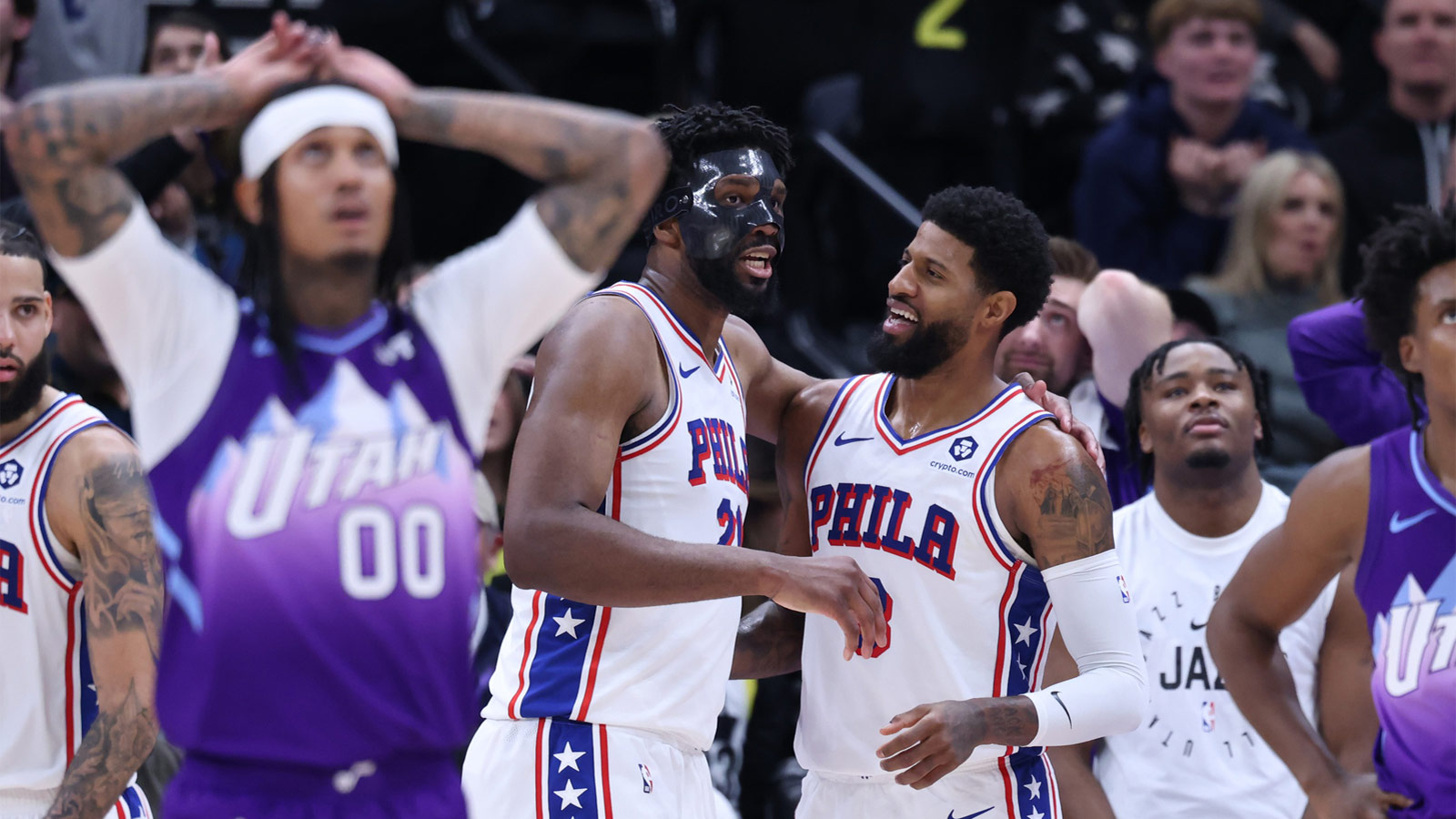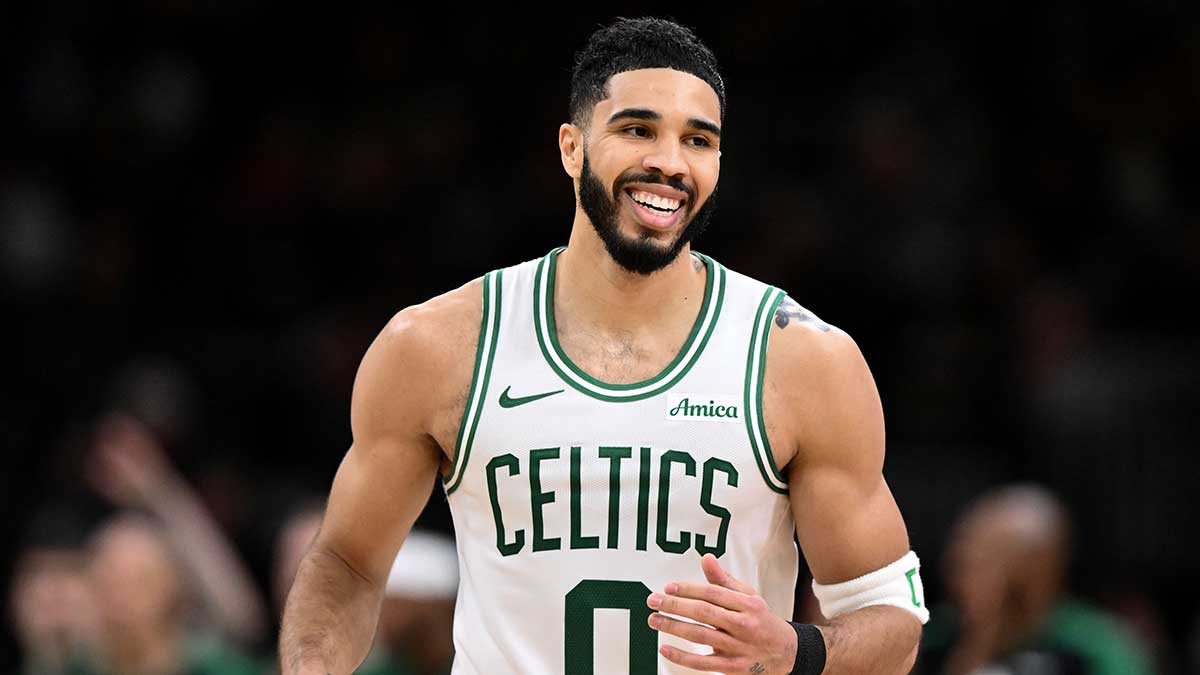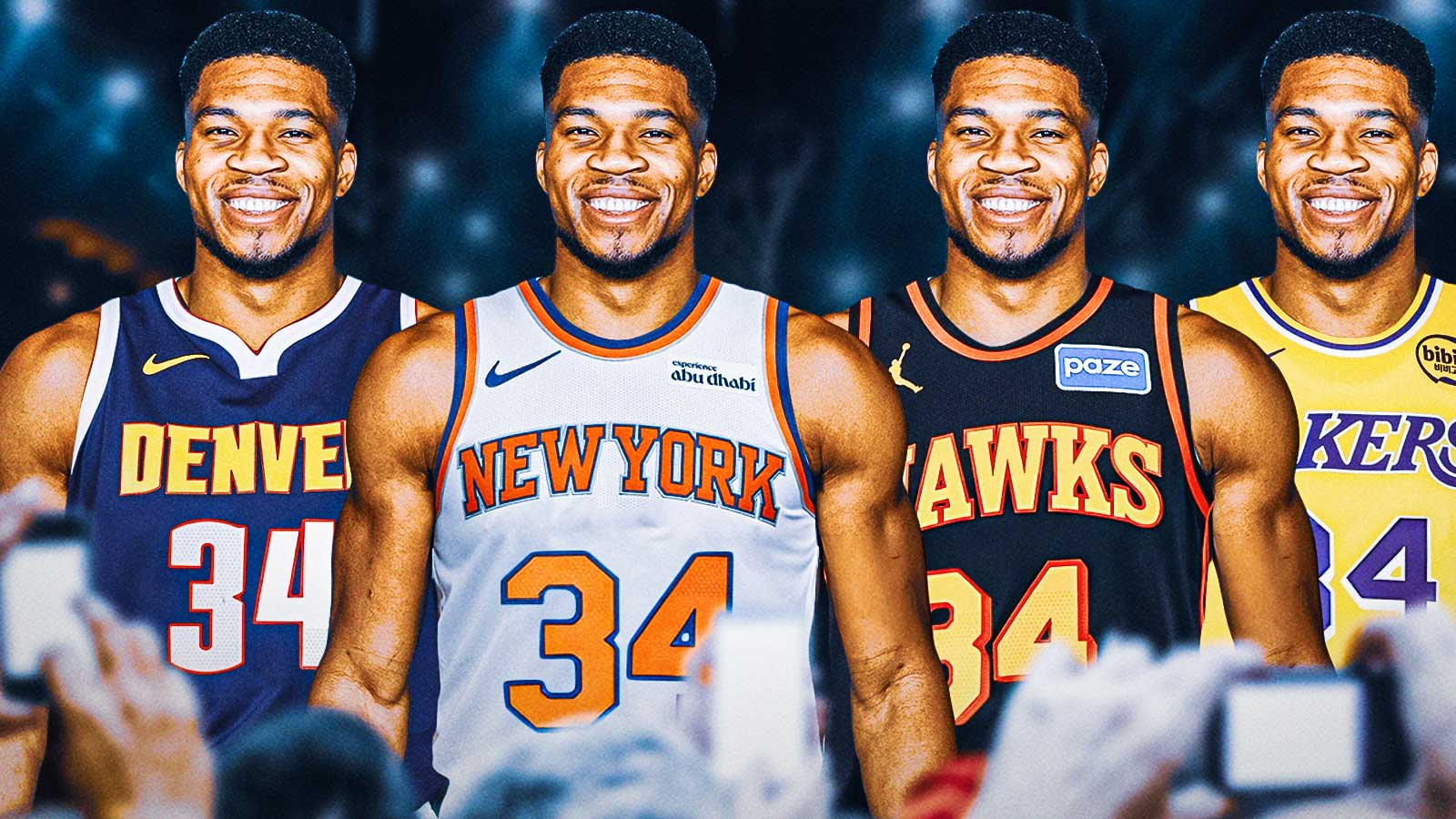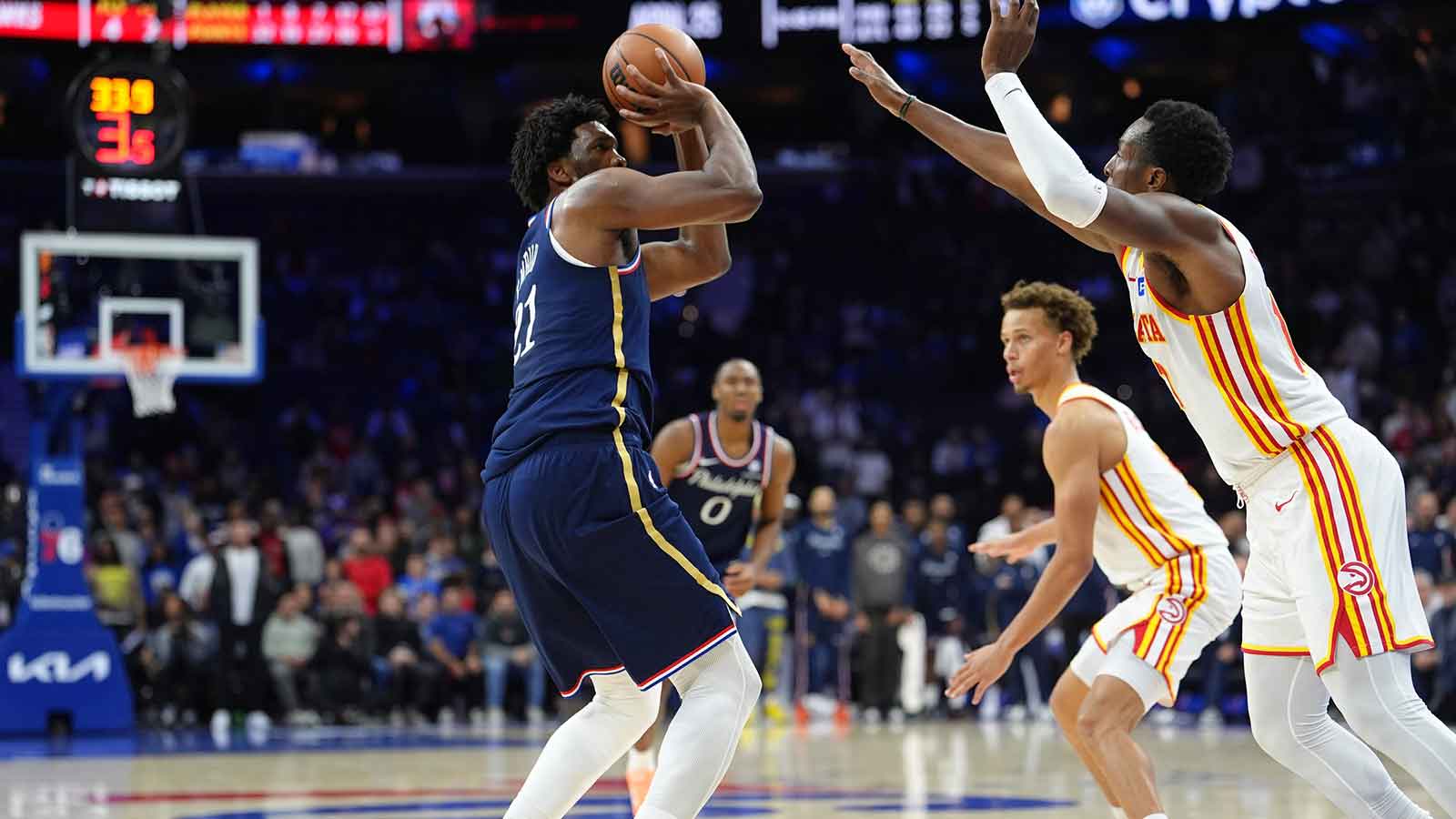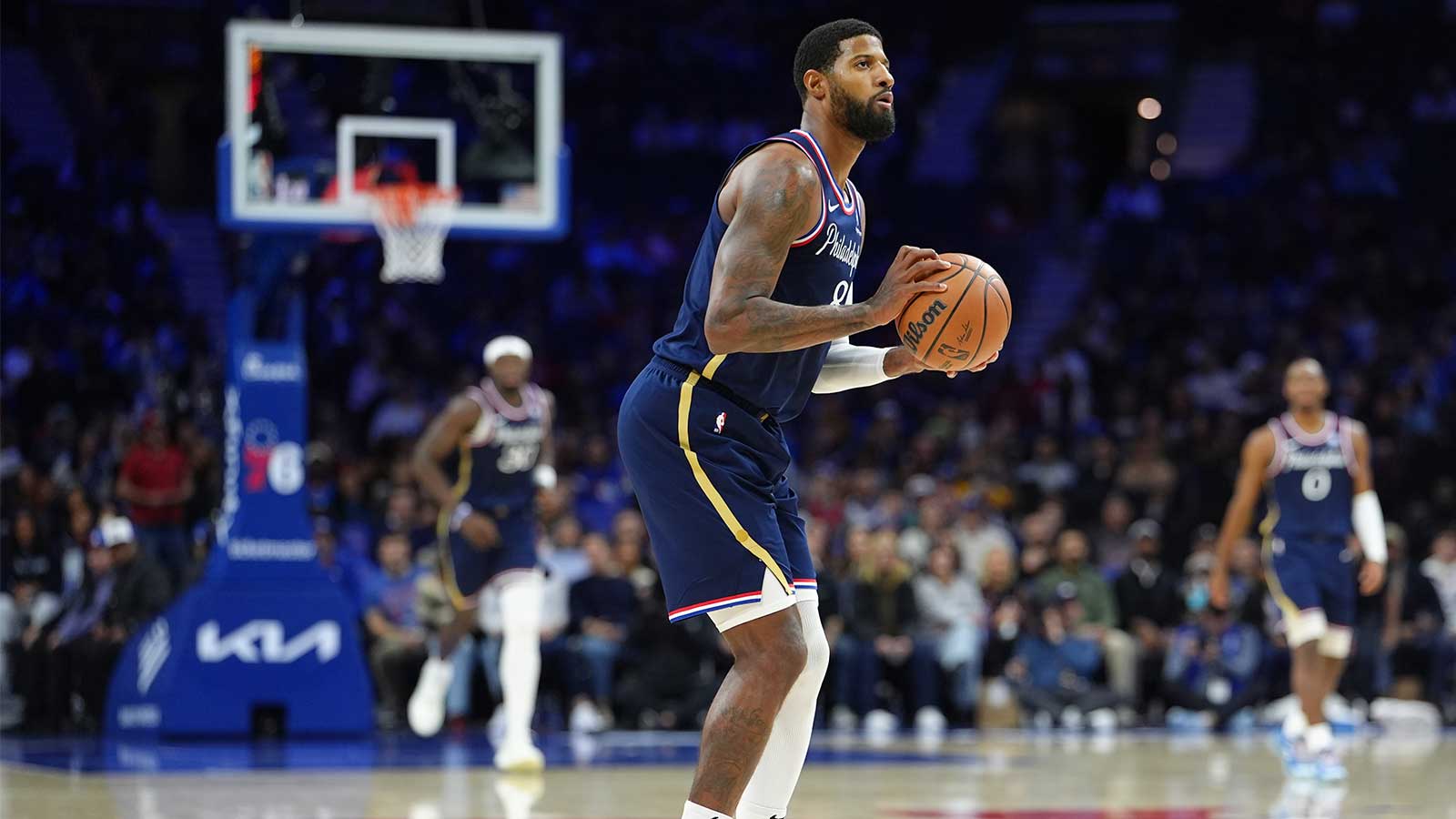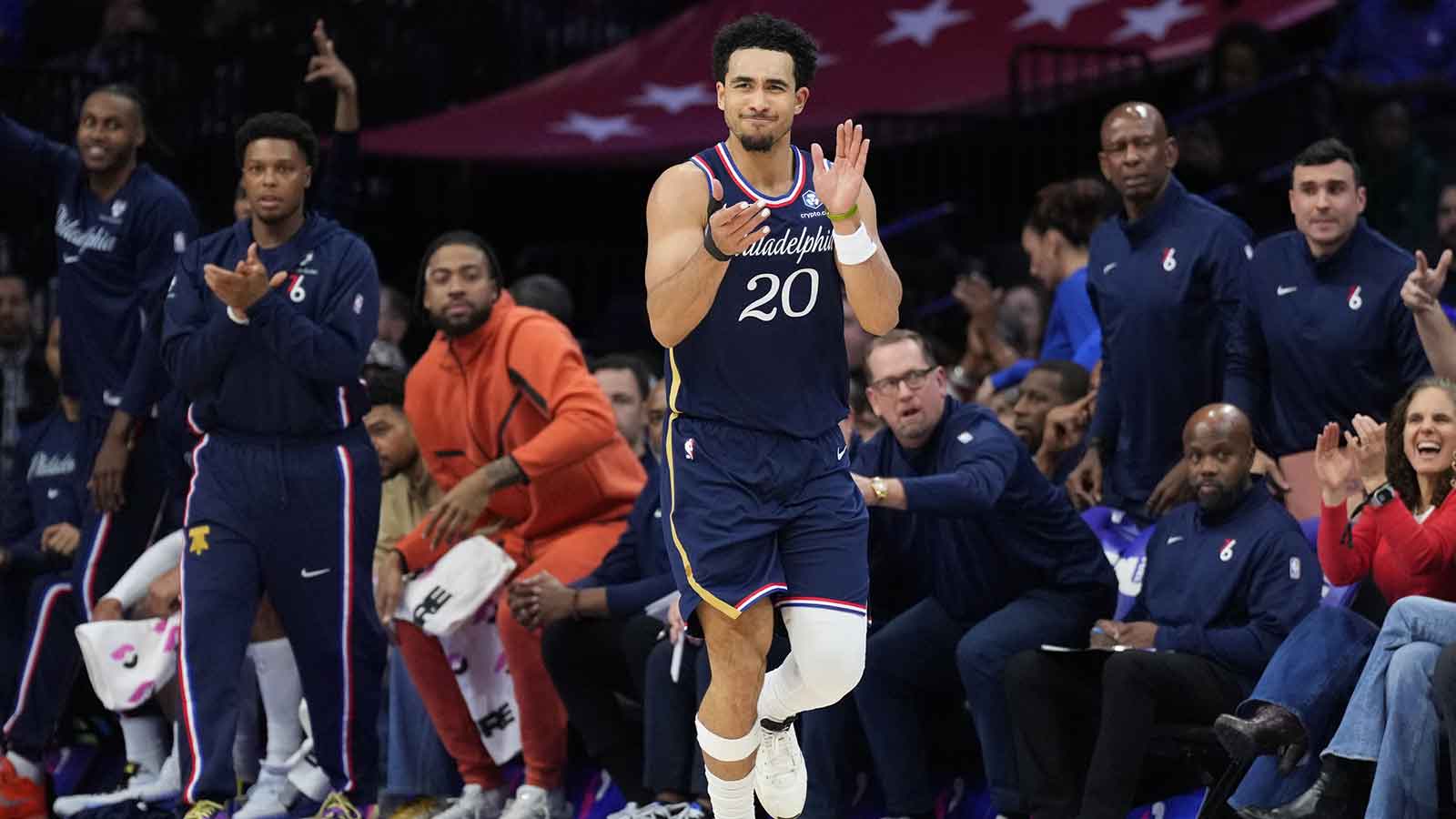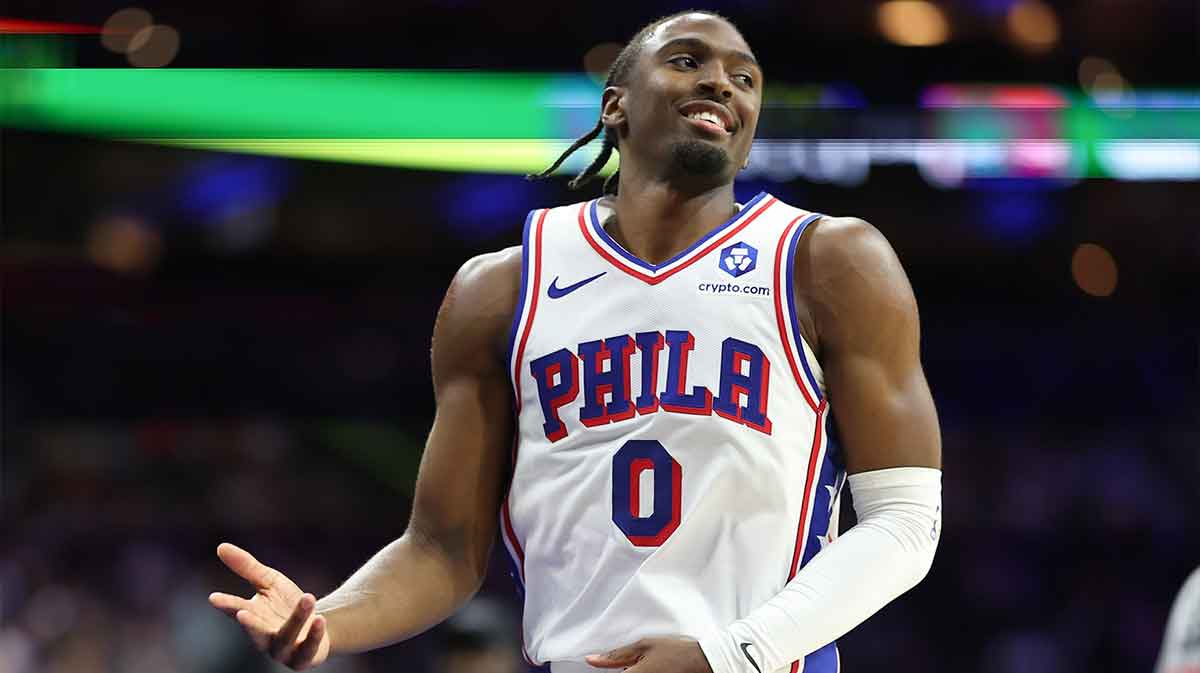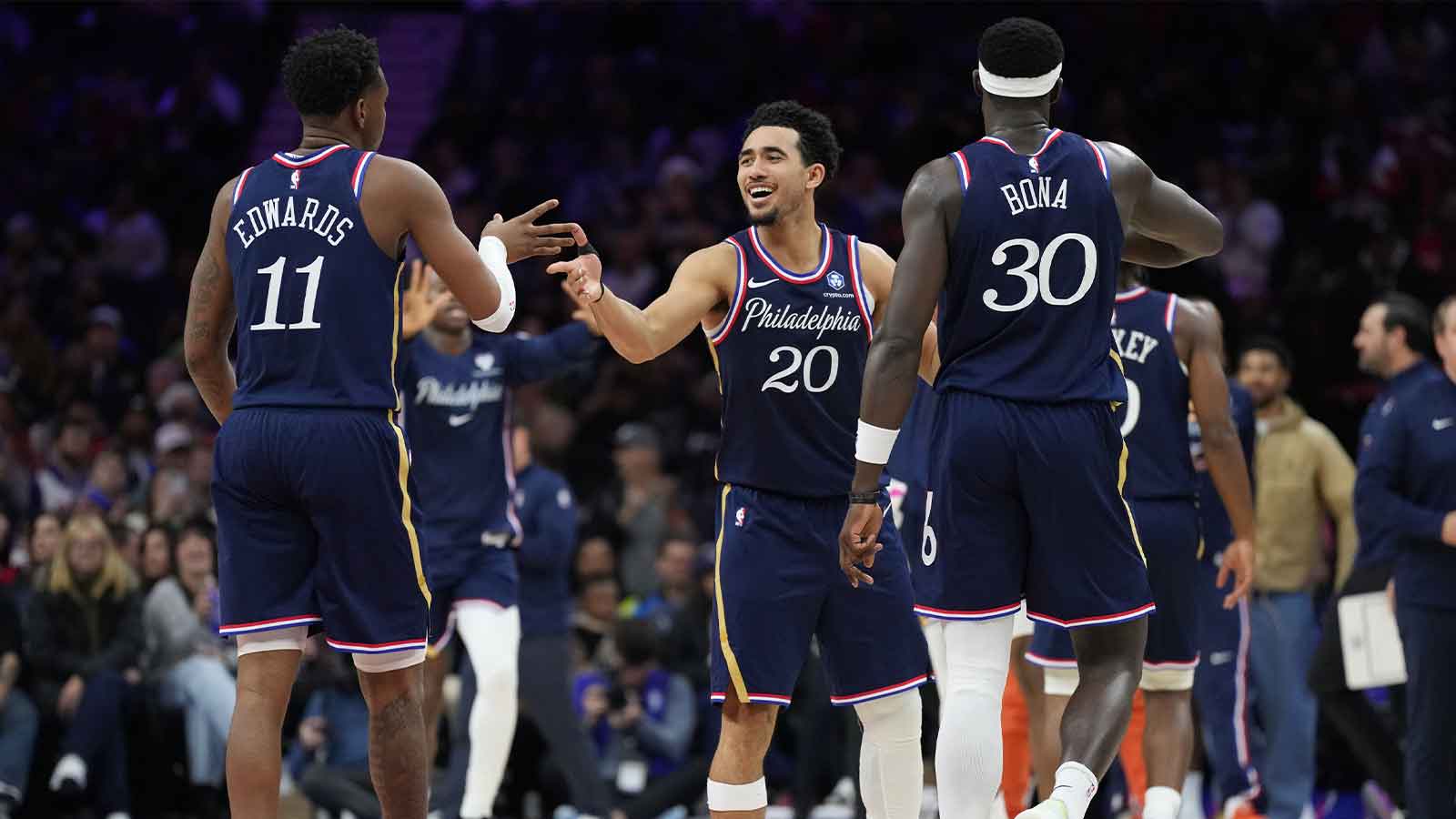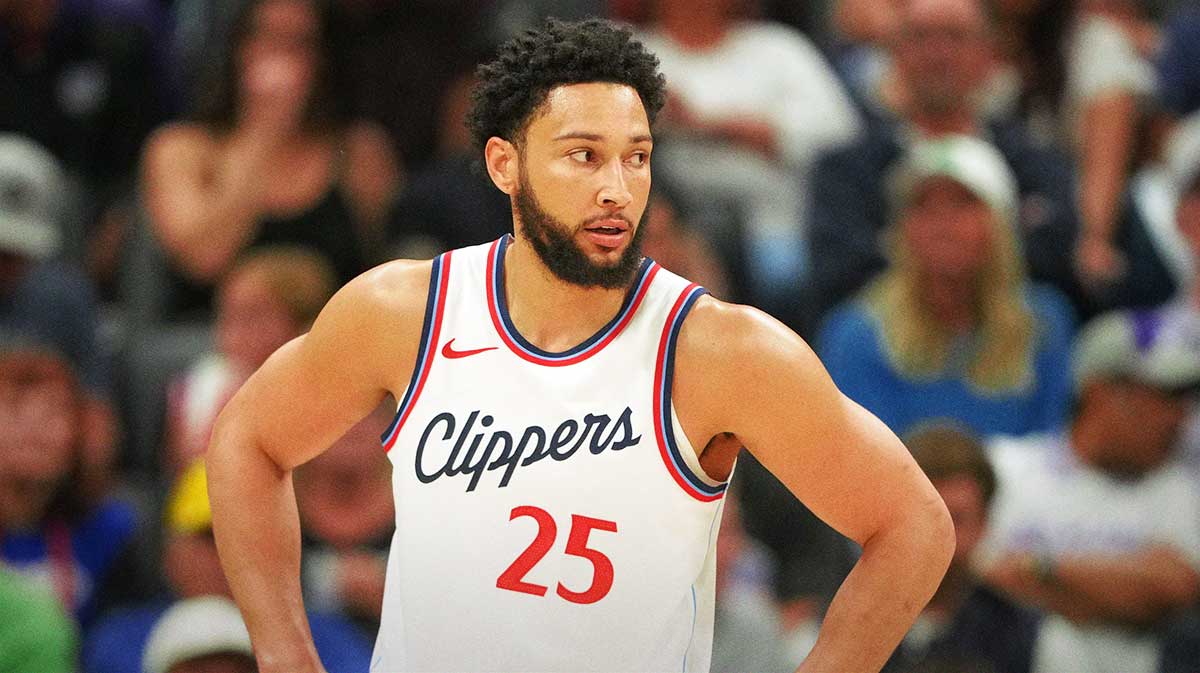Quentin Grimes has been nothing short of a godsend for the Philadelphia 76ers. In the midst of a miserable season, the 24-year-old is proving to be a key building block for the future.
In just 11 games as a Sixer, Grimes has set a new career-high with 44 points, scored 30 on two other occasions and flashed an ability to generate good shots. He's averaging 17.7 points per game with Philly, far more than he has averaged with any other team in his career.
The big reason why Grimes is scoring so much is because he has had to take a more central role in the wake of injuries to the stars he was supposed to play alongside. But he hasn’t sacrificed any efficiency while taking on a much bigger role, which suggests he's going to feast when (or, sadly, if) Joel Embiid regains his elite form. His 62.6 true shooting percentage as a Sixer has come with a 21.2 percent usage rating. Not at any other stop in his career has he shot this much and this well.
Grimes is a sharpshooter with a keen understanding of how to leverage his shooting gravity into driving opportunities. The open canvas provided to him by the injury-plagued 76ers has been blanketed with an array of smooth jumpers, herky-jerky moves and transition attacks that, in unison, have created a picture of a walking bucket.
The foundation: Quentin Grimes' great 3-point shooting
Let's start with the obvious: Grimes can shoot the ball well from downtown. With the Sixers, he's shooting 38.2 percent from deep on 6.2 attempts per game. This is where he not only shows his value as an off-ball scorer but sets up everything else he does.
The Sixers' original plan for Grimes was to make him a spot-up threat around Embiid. They needed more shooters who could punish defense for doubling Embiid. It's clear now that he's overqualified for that role but, nonetheless, he can get it done. With a picturesque mechanics that features a high release point, he's just what any star would want in their spot-up shooter.
Grimes' great shot mechanics don't change when he's firing off the dribble. Teams are learning that he's not someone they can play drop coverage against. When bigs hang back in the paint, he's just going to step right into a three-pointer.
Defenders have to close out hard to Grimes because they never want him to shoot uncontested threes. He knows that — and he's happy to use the momentum of a closeout or hard contest against them. Whenever he's run off the three-point line, he'll take it strong to the cup.
Grimes' shooting opens up the rest of his game. But it's not as if he can only do damage when someone else sets him up.
Change of pace/misdirection
Defenses play up on Grimes to deter him from shooting. They'll overplay him when a screen comes to make sure he doesn’t get a clean look. He turns it back on them expertly, setting up defenders to think he's going one way and then snapping back the opposite direction.
Grimes isn’t the fastest player, nor the most explosive, but he's quick and decisive. Lulling defenders into a false sense of security allows him to plant a foot and turn the opposite direction. Any time a defender tries to jump his route of attack, he changes it on a dime.
Rejecting screens is simply a way to use the threat of an advantage to create an actual one. Jaylen Brown is preparing himself to get over a screen, especially because it's a good screener in Guerschon Yabusele coming to free Grimes. But once Brown turns his head, Grimes is gone.
Grimes likes using rip-through moves and rocker steps (like he did to score on Stephen Curry) to freeze defenders or make them commit harder in one direction. Even if a defender can stay with him initially, he can step back into the space he created to rise up for a jumper.
Playing with pace
Grimes hunts shots earlier in the clock, giving himself (and the Sixers) easier chances to score by pushing the ball up the court with gusto. Shooting better on shots early in the clock is not a rarity but because Grimes can create a considerable amount of them, the Sixers' transition offense is much, much better when he's on the court.
Here are Grimes' splits as a Sixer for the three most common slice of the shot clock when he shoots:
- 22-18 seconds left: 30 field goal attempts, 73.3 effective field goal percentage
- 18-15 seconds left: 27 FGAs, 63.0 eFG%
- 15-7 seconds left: 69 FGAs, 55.1 eFG%
Grimes' shots in the 22-18 second range constitute 21.0 percent of his shot attempts. Only a handful of players around the league run that often and shoot as efficiently as he does. Even if there’s more defenders back than there are teammates of his, Grimes tests the defense and powers through.
Grimes' stout defense earns him more attempts to get up the floor. He's not only a pest on the ball but a sound team defender, which is how he turns a forced missed layup into a made one of his own.
When he's not leading the charge with the ball, Grimes is running the floor hard. He fills lanes and is always ready to receive a pass, making himself an option. Starting at the same distance from the opposite baseline when Paul George gets the steal, Grimes darts ahead and beats everyone up the floor.
In Grimes, the 76ers have found a lot of what they need. They have needed point-of-attack defense for a while. They need guys who can knock down threes (and open the floor with their shooting gravity) and attack closeouts in an offense that, at full strength, will be dominated by three stars.
Embiid, George and Tryese Maxey still make up the Sixers' core but the two oldest stars showed serious limitations this season. Going forward, Embiid and George may not be good enough to hold the offense up mostly by themselves. Players like Grimes, who make their life easier just as they do for him, will be extra important as Embiid tries to overcome worrisome knee issues and George's star begins to fade.
As he heads to restricted free agency this offseason, Quentin Grimes should be the 76ers' biggest priority to re-sign.

